결과부터 이야기하자면 NASA 는 달에 갔다, 고 나는 믿는다. 이는 나의 전적인 물리조교에 대한 믿음으로 인한 것이다.
내가 이리 단순하지. 나의 사랑은 신뢰를 키우고 그렇게 나는 물리 조교의 말을 믿지, 의심 없이 제로 none. 더불어 그의 인종은 미국인이 아니다. 인종에 대해서는 여기까지.
아무튼 논쟁 자체는 흥미롭다. 이는 자연과학이 아닌 사회적인 이슈이다. 당시 space war 를 고려하여 충분히 제시 될 수 있는 설이고 충분히 믿을 법한 설이다. 재미있다.
Motives
[edit]Claimed motives of the United States and NASA
Those who believe the landings were faked give several theories about the motives of NASA and the United States government. The three main theories are below.
- The Space Race
The US government deemed it vital that it win the Space Race against the Soviet Union. Going to the Moon would be risky and expensive, as exemplified by John F. Kennedy famously stating that the United States chose to go because it was hard.[17]
A main reason for the race to the Moon was the Cold War. Philip Plait states in Bad Astronomy that the Soviets—with their own competing Moon program and a formidable scientific community able to analyze NASA data—would have cried foul if the United States tried to fake a Moon landing,[18] especially since their own program had failed. Proving a hoax would have been a huge propaganda win for the Soviets. Bart Sibrel responded, "the Soviets did not have the capability to track deep spacecraft until late in 1972, immediately after which, the last three Apollo missions were suddenly canceled."[19]
However, the Soviets had been sending unmanned spacecraft to the Moon since 1959,[20] and "during 1962, deep space tracking facilities were introduced at IP-15 in Ussuriisk and IP-16 inEvpatoria, while Saturn communication stations were added to IP-3, 4 and 14",[21] the latter having a 100 million km range.[22] The Soviet Union tracked the Apollo missions at the Space Transmissions Corps, which was "fully equipped with the latest intelligence-gathering and surveillance equipment".[23] Vasily Mishin, in an interview for the article "The Moon Programme That Faltered" (Spaceflight, March 1991, vol. 33, 2-3), describes how the Soviet Moon program dwindled after the Apollo landings.
- Funding
It is claimed that NASA faked the landings to forgo humiliation and to ensure that it continued to get funding. NASA raised about US$30 billion to go to the Moon, and Bill Kaysing claims that this could have been used to "pay off" many people.[24] Since most conspiracists believe that sending men to the Moon was impossible at the time, they argue that landings had to be faked to fulfill President Kennedy's 1961 promise: "achieving the goal, before this decade is out, of landing a man on the Moon and returning him safely to the Earth".[17] Others have claimed that, with all the known and unknown hazards,[25] NASA would not have risked the public humiliation of astronauts crashing to their deaths on the lunar surface, broadcast on live TV.[26]
- Vietnam War
It is claimed that the landings helped the US government because they were a popular distraction from the Vietnam War; and so manned landings suddenly ended about the same time that the US ended its role in the Vietnam War.[27]
[edit]Claimed motives of the conspiracists
![[icon]](http://upload.wikimedia.org/wikipedia/commons/thumb/1/1c/Wiki_letter_w_cropped.svg/20px-Wiki_letter_w_cropped.svg.png) | This section requires expansion. (April 2011) |
Some have argued that one of the main motives of conspiracists is making money from pseudoscience. In November 2002, actor Tom Hanks, who starred in the movie Apollo 13 and produced the documentary From the Earth to the Moon, was asked what he thought of the conspiracy theories. He replied: "We live in a society where there is no law [against] making money in the promulgation of ignorance or, in some cases, stupidity". An unsuccessful attempt was made to sue astronaut Jim Lovell (Apollo 8 and Apollo 13) because he said that he went to the Moon.[28]
[edit]Conspiracists and their main proposals
- Bill Kaysing (1922–2005) – an ex-employee of Rocketdyne,[29] the company which built the F-1 engines used on the Saturn V rocket. Kaysing was not technically qualified, and worked at Rocketdyne as a librarian. Kaysing's self published book, We Never Went to the Moon: America's Thirty Billion Dollar Swindle,[30][31] made many allegations, effectively beginning the discussion of the Moon landings possibly being hoaxed. Kaysing maintains that, despite close monitoring by the USSR, it would have been easier for NASA to fake the Moon landings, thereby guaranteeing success, than for NASA to really go there. He claimed that the chance of a successful manned landing on the Moon was calculated to be 0.017%.[32] NASA and others have debunked the claims made in the book.
- Bart Sibrel – a filmmaker, produced and directed four films for his company AFTH,[33] including a film in 2001 called A Funny Thing Happened on the Way to the Moon,[34] examining the evidence of a hoax. The arguments that Sibrel puts forward in this film have been debunked by many sources, including Svector's video series Lunar Legacy,[35] which disproves the documentary's main argument that the Apollo crew faked their distance from the Earth command module, while in low orbit. Sibrel has stated that the effect on the shot covered in his film was made through the use of a transparency of the Earth. Some parts of the original footage, according to Sibrel, were not able to be included on the official releases for the media. On such allegedly censored parts, the correlation between Earth and Moon Phases can be clearly confirmed, refuting Sibrel's claim that these shots were faked. Sibrel was punched in the face by Buzz Aldrin after Sibrel confronted Aldrin with his theories[36] while accusing the former astronaut of being "a coward, and a liar, and a thief". The Los Angeles County district attorney's office refused to file charges against Aldrin, saying that he had been provoked by Sibrel.[37]
- William L. Brian – a nuclear engineer who self-published a book in 1982 called Moongate: Suppressed Findings of the U.S. Space Program, in which he disputes the Moon's surface gravity.
- David Percy – TV producer and expert in audiovisual technologies and member of the Royal Photographic Society. He is co-writer, along with Mary Bennett of Dark Moon: Apollo and the Whistle-Blowers (ISBN 1-898541-10-8) and co-producer of What Happened On the Moon?. He is the main proponent of the "whistle-blower" accusation, arguing that mistakes in the NASA photos are so obvious that they are evidence that insiders are trying to 'blow the whistle' on the hoax by knowingly adding mistakes that they know will be seen.[38]
- Ralph Rene – an inventor and 'self taught' engineering buff. Writer of NASA Mooned America (second edition OCLC 36317224).
- James M. Collier (d. 1998) – American journalist and writer, producer of the video Was It Only a Paper Moon ? (1997).
- Jack White – American photo historian known for his attempt to prove forgery in photos related to the assassination of US President John F. Kennedy.
- Marcus Allen – British publisher of Nexus who said that photographs of the lander would not prove that the US put men on the Moon. He said, "Getting to the Moon really isn't much of a problem – the Russians did that in 1959, the big problem is getting people there". He suggests that NASA sent robot missions because radiation levels in space would be deadly.[39] Another variant on this is the idea that NASA and its contractors did not recover quickly enough from the Apollo 1 fire, and so all the early Apollo missions were faked, with Apollo 14 or 15 being the first real mission.[40]
- Aron Ranen – states in his documentary film Did We Go? (2005) that "right now I'm about 75% believing we went". However, on July 20, 2009, Ranen appeared on Geraldo at Large (Fox News Channel) to argue that no one has landed on the Moon.
- Clyde Lewis – radio talk show host.[41]
- David Groves – works for Quantech Image Processing and worked on some of the NASA photos. Notably he has examined the photo of Aldrin emerging from the lander. He said he can pinpoint when a spotlight was used. Using the focal length of the camera's lens and an actual boot, he allegedly calculated, using ray-tracing, that the spotlight is between 24 to 36 centimetres (9.4 to 14 in) to the right of the camera.[42] This matches with the sunlit part of Armstrong's spacesuit.[43]
- Yuri Mukhin – Russian opposition politician, publicist and writer of the book The Moon Affair of the USA (2006) in which he denies all Moon landing evidence and accuses the US government of plundering the money paid by the American taxpayers for the Moon program. He also claims the Central Committee of the Communist Party of the Soviet Union and some Soviet scientists helped NASA fake the landings.[44]
- Alexander Popov – Russian doctor of physical-mathematical sciences and writer of the book Americans on the Moon – A Great Breakthrough or a Space Affair? (Moscow, 2009, ISBN 978-5-9533-3315-3) in which he aims to prove that Saturn V was in fact a camouflaged Saturn 1B[45] and denies all Moon landing evidence.[46]
- Stanislav Pokrovsky – Russian candidate of technical sciences and General Director of a scientific-manufacturing enterprise Project-D-MSK who calculated that the real speed of the Saturn V rocket at S-IC staging time was only half of what was declared. His analysis appears to assume that the solid rocket plumes from the fusellage and retro rockets on the two stages came to an instant halt in the surrounding air so they can be used to estimate the velocity of the rocket. He ignored high altitude winds and the altitude at staging, 67 km, where air is about 1/10,000 as dense as at sea level, and claimed that only a loop around the Moon was possible, not a manned landing on the Moon with return to Earth. He also allegedly found the reason for this – problems with the Inconel superalloy used in the F-1 engine.[47][48][49]
- Philippe Lheureux – French writer of Moon Landings: Did NASA Lie? and Lights on the Moon: Did NASA Lie? (Lumières sur la Lune: La NASA a-t-elle menti?). He said that astronauts did land on the Moon but to stop other states from benefiting from scientific information in the real photos, NASA published fake images.[50]
- Joe Rogan – American comedian, actor, and recreational drug use activist. Vociferous proponent of a number of hoax claims, in particular the alleged unavoidable lethality of the Van Allen radiation belts.
[edit]Examination of the hoax claims
Many conspiracy theories have been forwarded. They either claim that the landings did not happen and that NASA employees (and sometimes others) have lied; or that landings did happen but not in the way that has been told. Conspiracists have focused on perceived gaps or inconsistencies in the historical record of the missions. The foremost idea is that the whole manned landing program was a hoax from start to end. Some claim that the technology to send men to the Moon was lacking or that the Van Allen radiation belts, solar flares, solar wind, coronal mass ejectionsand cosmic rays made such a trip impossible.[30]
Vince Calder and Andrew Johnson, scientists from Argonne National Laboratory, gave detailed answers to the conspiracists' claims on the laboratory's website.[51] They show that NASA's portrayal of the Moon landing is fundamentally accurate, allowing for such common mistakes as mislabeled photos and imperfect personal recollections. Using the scientific process, any hypothesis that is contradicted by the observable facts may be rejected. The 'real landing' hypothesis is a single story since it comes from a single source, but there is no unity in the hoax hypothesis because hoax accounts vary between conspiracists.[52]
[edit]Number of people involved
According to James Longuski (Professor of Aeronautics and Astronautics Engineering at Purdue University), the conspiracy theories are impossible because of their size and complexity. More than 400,000 people worked on the Apollo project for nearly ten years, a dozen men who walked on the Moon returned to Earth to recount their experiences, plus 6 others who flew with them as Command Module Pilots as direct witnesses, and another 9 astronauts who orbited the moon (which proves, at least, that the Saturn-V was capable of reaching the moon. A feat which some hoax theorists claim wasn't possible.) Hundreds of thousands of people—including astronauts, scientists, engineers, technicians, and skilled laborers—would have had to keep the secret. Longuski argues that it would have been much easier to really land on the Moon than to generate such a huge conspiracy to fake the landings.[53][54] To date, nobody from the US government or NASA who would have had a link to the Apollo program has said the Moon landings were hoaxes. Penn Jillette made note of this in the "Conspiracy Theories" episode of his contrarian television show Penn & Teller: Bullshit! in 2005. He said that, with the number of people that would have had to be involved, someone would have outed the hoax by now. With the government's track record of keeping secrets (noting Watergate), Jillette said the government could not have silenced everyone if the landings were faked.
[edit]Photograph and film oddities
Conspiracists focus heavily on examining NASA photos. They point to oddities in photographs and films taken on the Moon. Photography experts (even those unrelated to NASA) answer that the oddities are what one would expect from a real Moon landing, and not what would happen with tweaked or studio imagery. Some of the main arguments and counter-arguments are listed below.
1. In some photos, crosshairs appear to be behind objects. The cameras were fitted with a reseau plate (a clear glass plate with crosshairs etched on), making it impossible for any photographed object to appear "in front" of the grid. This suggests that objects have been "pasted" over them.
- This only appears in copied and scanned photos, not the originals. It is caused by overexposure: the bright white areas of the emulsion "bleed" over the thin black crosshairs. The crosshairs are only about 0.004 inch thick (0.1 mm) and emulsion would only have to bleed about half that much to fully obscure it. Furthermore, there are many photos where the middle of the crosshair is "washed-out" but the rest is intact. In some photos of the American flag, parts of one crosshair appear on the red stripes, but parts of the same crosshair are faded or invisible on the white stripes. There would have been no reason to "paste" white stripes onto the flag.[55]
| Enlargement of a poor-quality 1998 scan – both the crosshair and part of the red stripe have "bleeded out" |
| Enlargement of a higher quality 2004 scan – crosshair and red stripe visible |
| David Scott salutes the American flag during the Apollo 15 mission. The arms of the crosshair are washed out on the white stripes of the flag (Photo ID: AS15-88-11863) |
| Close-up of the flag, showing washed-out crosshairs |
|
2. Crosshairs are sometimes misplaced or rotated.
- This is a result of popular photos being cropped and/or rotated for aesthetic impact.[55]
3. The quality of the photographs is implausibly high.
- There are many poor quality photographs taken by the Apollo astronauts. NASA chose to publish only the best examples.[56][57]
- The Apollo astronauts used high resolution Hasselblad 500 EL/M Data cameras with Carl Zeiss optics and a 70-mm film magazine.[58]
4. There are no stars in any of the photos; the Apollo 11 astronauts also claimed in a post-mission press conference to not remember seeing any stars.
- The astronauts were talking about naked-eye sightings of stars during the lunar daytime. They regularly sighted stars through the spacecraft navigation optics while aligning their inertial reference platforms.
- All manned landings happened during the lunar daytime. Thus, the stars were outshone by the sun and by sunlight reflected off the moon's surface. The astronauts' eyes were adapted to the sunlit landscape around them so that they could not see the relatively faint stars. Likewise, cameras were set for daylight exposure and could not detect the stars.[59][60] Camera settings can turn a well-lit background into ink-black when the foreground object is brightly lit, forcing the camera to increase shutter speed in order not to have the foreground light completely wash out the image. A demonstration of this effect is here. The effect is similar to not being able to see stars from a brightly lit car park at night—the stars only become visible when the lights are turned off. The astronauts could see stars with the naked eye only when they were in the shadow of the Moon.[61][62]
- An ultraviolet telescope was taken to the lunar surface on Apollo 16 and operated in the shadow of the lunar module. It captured pictures of Earth and of many stars, some of which are dim in visible light but bright in the ultraviolet. These observations were later matched with observations taken by orbiting ultraviolet telescopes. Furthermore, the positions of those stars with respect to Earth are correct for the time and location of the Apollo 16 photographs.
- Pictures of the solar corona that included the planet Mercury and some background stars were taken from lunar orbit by Apollo 15 Command Module Pilot Al Worden.[63]
- Pictures of the planet Venus (which is much brighter than any of the stars) were taken from the Moon's surface by astronaut Alan Shepard during the Apollo 14 mission.
| Earth and Mir in June 1995 – an example of how sunlight can outshine the stars, making them invisible |
| Long exposure photograph from the ISS of Space Shuttle reentry which some stars are visible In this image the Earth is lit by moonlight, not sunlight |
|
5. The angle and color of shadows are inconsistent. This suggests that artificial lights were used.
- Shadows on the Moon are complicated by reflected light, uneven ground, wide-angle lens distortion, and lunar dust. There are several light sources: the Sun, sunlight reflected from the Earth, sunlight reflected from the Moon's surface, and sunlight reflected from the astronauts and the Lunar Module. Light from these sources is scattered by lunar dust in many different directions, including into shadows. Shadows falling into craters and hills may appear longer, shorter and distorted.[64] Furthermore, shadows display the properties of vanishing point perspective, leading them to converge to a point on the horizon.
- This theory was shown to be untrue on the MythBusters episode "NASA Moon Landing".
6. There are identical backgrounds in photos which, according to their captions, were taken miles apart. This suggests that a painted background was used.
- Shots were not identical, just similar. What appear as nearby hills in some photos are actually mountains many miles away. On Earth, objects that are further away will appear fainter and less detailed. On the Moon, there is no atmosphere or haze to obscure distant objects, thus they appear clearer and closer.[65] Furthermore, there are very few objects (such as trees) to help judge distance. One case is debunked in "Who Mourns For Apollo?" by Mike Bara.[66]
7. The number of photographs taken is implausibly high. Up to one photo per 50 seconds.[67]
- Simplified gear with fixed settings allowed two photos a second. Many were taken immediately after each-other as stereo pairs or panorama sequences. The calculation (one per 50 seconds) was based on a single astronaut on the surface, and does not take into account that there were two astronauts sharing the workload during EVA.
8. The photos contain artifacts like the two seemingly matching 'C's on a rock and on the ground. These may be labeled studio props.
- The "C"-shaped objects are most likely printing imperfections and do not appear in the original film from the camera. It has been suggested that the "C" is a coiled hair.[68][69]
| Original AS16-107-17445 photograph |
| Original AS16-107-17446 photograph |
| Close-up of later generation prints of 17446 |
|
9. A resident of Perth, Australia, with the pseudonym "Una Ronald", said she saw a soft drink bottle in the frame while watching one of the manned landings.
- No such newspaper reports or recordings have been found. Una Ronald's existence is claimed by only one source. There are also flaws in the story, i.e. the statement that she had to "stay up late" is easily discounted by many witnesses in Australia who watched the event in the middle of their daytime.[70]
10. The book Moon Shot contains an obvious composite photograph of Alan Shepard hitting a golf ball on the Moon with another astronaut.
- It was used instead of the only existing real images, from the TV monitor, which the editors of the book apparently felt were too grainy for their book. The book publishers did not work for NASA.
11. There appear to be "hot spots" in some photographs that look like a huge spotlight was used.
- Pits in Moon dust focus and reflect light in a manner similar to tiny glass spheres used in the coating of street signs, or dew-drops on wet grass. This creates a glow around the photographer's own shadow when it appears in a photograph (see Heiligenschein).
- If the astronaut is standing in sunlight while photographing into shade, light reflected off his white spacesuit produces a similar effect to a spotlight.[71]
- Some widely published Apollo photos were high contrast copies. Scans of the original transparencies are generally much more evenly lit. An example is shown below:
| Original photo of Buzz Aldrin during Apollo 11 |
| The more famous edited version. The contrast has been tweaked (yielding the "spotlight effect") and a black band has been pasted at the top |
|
12. Who filmed Neil Armstrong stepping onto the Moon?
- The Lunar Module did. While still on the steps, Armstrong deployed the Modularized Equipment Stowage Assembly from the side of the lunar module. This housed, amongst other things, the TV camera. This meant that upward of 600 million people on Earth could take part in the live feed.
[edit]Environment
1. The astronauts could not have survived the trip because of exposure to radiation from the Van Allen radiation belt and galactic ambient radiation (see radiation poisoning and health threat from cosmic rays). Some conspiracists have suggested that Starfish Prime (high altitude nuclear testing in 1962) was a failed attempt to disrupt the Van Allen belts.
- The spacecraft moved through the belts in about four hours, and the astronauts were protected from the ionizing radiation by the aluminium hulls of the spacecraft. Furthermore, the orbital transfer trajectory from Earth to the Moon through the belts was chosen to lessen radiation exposure. Even Dr James Van Allen, the discoverer of the Van Allen radiation belts, rebutted the claims that radiation levels were too dangerous for the Apollo missions.[72] Plait cited an average dose of less than 1 rem (10 mSv), which is equivalent to the ambient radiation received by living at sea level for three years.[73] The spacecraft passed through the intense inner belt and the low-energy outer belt. The total radiation received on the trip was about the same as allowed for workers in the nuclear energy field for a year.[74]
- The radiation is actually evidence that the astronauts went to the Moon. Irene Schneider reports that 33 of the 36 Apollo astronauts involved in the nine Apollo missions to leave Earth orbit have developed early stage cataracts that have been shown to be caused by radiation exposure to cosmic rays during their trip.[75] At least 39 former astronauts have developed cataracts; 36 of those were involved in high-radiation missions such as the Apollo missions.[76]
2. Film in the cameras would have been fogged by this radiation.
- The film was kept in metal containers that stopped radiation from fogging the film's emulsion.[77] Furthermore, film carried by unmanned lunar probes such as the Lunar Orbiter and Luna 3(which used on-board film development processes) was not fogged.
3. The Moon's surface during the daytime is so hot that camera film would have melted.
- There is no atmosphere to efficiently bind lunar surface heat to devices (such as cameras) that are not in direct contact with it. In a vacuum, only radiation remains as a heat transfer mechanism. The physics of radiative heat transfer are thoroughly understood, and the proper use of passive optical coatings and paints was enough to control the temperature of the film within the cameras; Moon lander temperatures were controlled with similar coatings that gave them a gold color. Also, while the Moon's surface does get very hot at lunar noon, every Apollo landing was made shortly after lunar sunrise at the landing site. During the longer stays, the astronauts did notice increased cooling loads on their spacesuits as the sun continued to rise and the surface temperature increased, but the effect was easily countered by the passive and active cooling systems.[78] The film was not in direct sunlight, so it wasn't overheated.[79] Note: TheMoon's day is about 29½ Earth days long, meaning that one Moon day (dawn to dusk) lasts nearly fifteen days.
4. The Apollo 16 crew should not have survived a big solar flare firing out when they were on their way to the Moon. They should have been fried.
- No large solar flare occurred during the flight of Apollo 16. There were large solar flares in August 1972, after Apollo 16 returned to Earth and before the flight of Apollo 17.[80][81]
5. The flag placed on the surface by the astronauts fluttered despite there being no wind on the Moon. This suggests that it was filmed on Earth and a breeze caused the flag to flutter. Sibrel said that it may have been caused by indoor fans used to cool the astronauts, since their spacesuit cooling systems would have been too heavy on Earth.
- The flag was attached to a Г-shaped rod so that it did not hang down. The flag only seemed to flutter when the astronauts were moving it into position. Without air drag, these movements caused the free corner of the flag to swing like a pendulum for some time. The flag was rippled because it had been folded during storage—the ripples could be mistaken for movement in a still photograph. Videotapes show that when the astronauts let go of the flagpole it vibrates briefly but then remains motionless.[82][83]
- This theory was shown to be untrue on the MythBusters episode "NASA Moon Landing".
| Cropped photo of Buzz Aldrin saluting the flag (note the fingers of Aldrin's right hand can be seen behind his helmet) |
| Cropped photo taken a few seconds later, Buzz Aldrin's hand is down, head turned toward the camera, the flag is unchanged |
| Animation of the two photos, showing that though Armstrong's camera moved between exposures, the flag is not waving |
|
6. Footprints in the Moon dust are unexpectedly well preserved, despite the lack of moisture.
- The Moon dust has not been weathered like Earth sand and has sharp edges. This allows the Moon dust particles to stick together and hold their shape in the vacuum. The astronauts likened it to "talcum powder or wet sand".[66]
- This theory was shown to be untrue on the MythBusters episode "NASA Moon Landing".
7. The alleged Moon landings used either a sound stage, or were filmed outside in a remote desert with the astronauts either using harnesses or slow-motion photography to make it look like they were on the Moon.
- While the HBO Mini-series "From the Earth to the Moon", and a scene from "Apollo 13" used the sound-stage and harness setup, it is clearly seen from those films that dust rose did not quickly settle (some dust briefly formed clouds). In the film footage from the Apollo missions, dust kicked-up by the astronauts' boots and the wheels of the Moon rovers rose quite high (due to the lunar gravity), and settled quickly to the ground in an uninterrupted parabolic arc (due to there being no air to uphold the dust). Even if there had been a sound stage for hoax Moon landings that had had the air pumped-out, the dust would have reached nowhere near the height and trajectory as the dust shown in the Apollo film footage because of Earth gravity.
- During the Apollo 15 mission, David Scott did an experiment by dropping a hammer and a falcon feather at the same time. Both fell at the same rate and hit the ground at the same time. This proved that he was in a vacuum.[84]
| David Scott drops a hammer and feather on the Moon |
|
[edit]Mechanical issues

Under the Apollo 11 Lunar Module
1. The Moon landers made no blast craters or any sign of dust scatter.[85]
- No crater should be expected. The Descent Propulsion System was throttled very far down during the final landing. The Moon lander was no longer quickly decelerating, so the descent engine only had to support the lander's own weight, which was lessened by the Moon's gravity and by the near exhaustion of the descent propellants. At landing, the engine thrust divided by the nozzle exit area is only about 10 kilopascals (1.5 PSI).[86] Beyond the engine nozzle, the plume spreads and the pressure drops very quickly. (In comparison the Saturn V F-1 first stage engines produced 3.2 MPa (459 PSI) at the mouth of the nozzle.) Rocket exhaust gases expand much quicker after leaving the engine nozzle in a vacuum than in an atmosphere. The effect of an atmosphere on rocket plumes can be easily seen in launches from Earth; as the rocket rises through the thinning atmosphere, the exhaust plumes broaden very noticeably. To lessen this, rocket engines designed for vacuums have longer bells than those designed for use on Earth, but they still cannot stop this spreading. The Moon lander's exhaust gases therefore expanded quickly well beyond the landing site. However, the descent engines did scatter a lot of very fine surface dust as seen in 16mm movies of each landing, and many mission commanders spoke of its effect on visibility. The landers were generally moving horizontally as well as vertically, and photos do show scouring of the surface along the final descent path. Finally, the lunar regolith is very compact below its surface dust layer, further making it impossible for the descent engine to blast out a "crater".[87] In fact, a blast crater was measured under the Apollo 11 lander using shadow lengths of the descent engine bell and estimates of the amount that the landing gear had compressed and how deep the lander footpads had pressed into the lunar surface and it was found that the engine had eroded between 4 and 6 inches of regolith out from underneath the engine bell during the final descent and landing.[88],pp. 97-98[89]
2. The second stage of the launch rocket and/or the Moon lander ascent stage made no visible flame.
- The Moon landers used Aerozine 50 (fuel) and dinitrogen tetroxide (oxidizer) propellants, chosen for simplicity and reliability; they ignite hypergolically –upon contact– without the need for a spark. These propellants produce a nearly transparent exhaust.[90] The same fuel was used by the core of the American Titan rocket. The transparency of their plumes is apparent in many launch photos. The plumes of rocket engines fired in a vacuum spread out very quickly as they leave the engine nozzle (see above), further lessening their visibility. Finally, rocket engines often run "rich" to slow internal corrosion. On Earth, the excess fuel burns in contact with atmospheric oxygen. This cannot happen in a vacuum.
Apollo 17 LM leaving the Moon; rocket exhaust visible only briefly.
Apollo 8 launch through the first stage separation
Exhaust flame may not be visible outside the atmosphere, as in this photo. Rocket engines are the dark structures at the bottom center.
The launch of a Titan II, burning hypergolic Aerozine-50/N2O4, 430,000 pounds-force (1.9 MN) of thrust. Note the near-transparency of the exhaust, even in air (water is being sprayed up from below).
Atlas uses non-hypergolic kerosene (RP-1) fuel which gives a bright and very visible exhaust, 340,000 lbf(1.5 MN) of thrust
Bright flame from first stage of the Saturn V, burning RP-1
3. There should not have been deep dust around the Moon landers; given the blast from the landing engines.
- The dust is created by a continuous rain of micro-meteoroid impacts and is typically several inches thick. It forms the top of the lunar regolith, a layer of impact rubble several meters thick and highly compacted with depth. On Earth, an exhaust plume might stir up the atmosphere over a wide area. On the Moon, only the exhaust gas itself can disturb the dust. Some areas around descent engines were scoured clean.[87]
- Note: Moving footage of astronauts and the Moon rover kicking-up Moondust clearly show the dust kicking up quite high due to the low gravity, but settling quickly without air to stop it. Had these landings been faked on the Earth, dust clouds would have formed. (They can be seen as a 'goof' in the movie Apollo 13 when Jim Lovell (played by Tom Hanks) imagines walking on the Moon). This clearly shows the astronauts to be (a) in low gravity and (b) in a vacuum.
4. The Moon landers weighed 17 tons and made no mark on the Moondust, yet footprints can be seen beside them.
- The lander weighed less than three tons on the Moon. The astronauts were much lighter than the lander, but their boots were much smaller than the 1-meter landing pads. Pressure (or force per unit area) rather than force determines the amount of regolith compression. In some photos the landing pads did press into the regolith, especially when they moved sideways at touchdown. (The bearing pressure under the lander feet, with the lander being more than 100 times the weight of the astronauts would in fact have been of similar magnitude to the bearing pressure exerted by the astronauts' boots.)
5. The air conditioning units that were part of the astronauts' spacesuits could not have worked in an environment of no atmosphere.
- The cooling units could only work in a vacuum. Water from a tank in the backpack flowed out through tiny pores in a metal sublimator plate where it quickly vaporized into space. The loss of the heat of vaporization froze the remaining water, forming a layer of ice on the outside of the plate that also sublimated into space (turning from a solid directly into a gas). A separate water loop flowed through the LCG (Liquid Cooling Garment) worn by the astronaut, carrying his metabolic waste heat through the sublimator plate where it was cooled and returned to the LCG. Twelve pounds [5.4 kg] of feedwater gave about eight hours of cooling; because of its bulk, it was often the limiting consumable on the length of an EVA. Because this system could not work in an atmosphere, the astronauts needed large external chillers to keep them comfortable during Earth training.
- Radiative cooling meant there would have been no need to drink water, but it could not work below body temperature in such a small volume. The radioisotope thermoelectric generatorscould use radiative cooling fins to allow indefinite operation because they operated at much higher temperatures.

Surveyor 3 with Apollo 12 lander in background.
6. Although Apollo 11 had made a landing well outside its target area, Apollo 12 made a pin-point landing, within walking distance (less than 200 meters) of the Surveyor 3 probe, which had landed on the Moon in April 1967.
- The Apollo 11 landing was several kilometers to the southeast of the middle of their intended landing ellipse, but still within it. Armstrong took semi-automatic control of the lander and directed it further down range when it was noted that the intended landing site was strewn with boulders near a moderate sized crater. By the time Apollo 12 flew, the cause of the mistake in the landing site was found, procedures were bettered and allowed Apollo 12 to make its pin-point landing. Apollo 11 fulfilled its role by simply landing safely on the Moon's surface and a pin-point landing was not needed on its mission.
- The Apollo astronauts were highly skilled pilots, and the lander was a maneuverable craft that could be accurately flown to a specific landing point. During the powered descent phase the astronauts used the PNGS (Primary Navigation Guidance System) and LPD (Landing Point Designator) to predict where the lander was going to land, and then they would manually pilot it to a chosen point with great accuracy.
7. All six lunar landings happened during the first Presidential administration of Richard Nixon and no leader of any other state has claimed to have landed astronauts on the Moon, even though the mechanical means of doing so should have become progressively much easier after almost 40 years of steady or even swift technological development.
- Other states and later US Presidents were less interested in spending large sums to be merely the second state/President to land men on the Moon. Had Nixon's administration faked the Moon landings, the Soviets would have been happy to argue for a hoax as a propaganda victory, but the Soviets never did. Further exploration by the US or USSR, such as founding a Moon base, would have been much more costly and maybe too provocative to be in any state's self-interest during the Cold War.[citation needed]
- The development of the Saturn V rocket, the Apollo CSM and LM and the flights up to Apollo 8 (which orbited the moon) were made before Richard Nixon became president in January 1969. Furthermore, Nixon did not personally care much for the program started by the man who defeated him in the 1960 Presidential Election, and his administration pushed for NASA to cancel Apollo 18, 19, and 20 in favor of the space shuttle program.[citation needed]
[edit]Transmissions
1. There should have been more than a two-second delay in communications between Earth and the Moon, at a distance of 400,000 km (250,000 mi).
- The round trip light travel time of more than two seconds is apparent in all the real-time recordings of the lunar audio, but this does not always appear as expected. There may also be some documentary films where the delay has been edited out. Reasons for editing the audio may be time constraints or in the interest of clarity.[91]

The relative sizes of, and distance between, Earth and Moon, to scale, with a beam of light traveling between them at the speed of light.
2. Typical delays in communication were about 0.5 seconds.
- Claims that the delays were only half a second are untrue, as examination of the original recordings show. It should also be borne in mind that there should not be a straightforward, consistent time delay between every response, as the conversation is being recorded at one end - Mission Control. Responses from Mission Control could be heard without any delay, as the recording is being made at the same time that Houston receives the transmission from the Moon.
3. The Parkes Observatory in Australia was billed to the world for weeks as the site that would be relaying communications from the Moon, then five hours before transmission they were told to stand down.
- The timing of the first Moonwalk was changed after the landing. In fact, delays in getting the Moonwalk started meant that Parkes did cover almost the entire Apollo 11 Moonwalk.[92]
4. Parkes supposedly provided the clearest video feed from the Moon, but Australian media and all other known sources ran a live feed from the United States.
- While that was the original plan, and, according to some sources, the official policy, the Australian Broadcasting Commission (ABC) did take the transmission direct from the Parkes andHoneysuckle Creek radio telescopes. These were converted to NTSC television at Paddington, in Sydney. This meant that Australian viewers saw the Moonwalk several seconds before the rest of the world.[93] See also The Parkes Observatory's Support of the Apollo 11 Mission, from "Publications of the Astronomical Society of Australia". The events surrounding the Parkes Observatory's role in relaying the live television of the Moonwalk were portrayed in a slightly fictionalized Australian film comedy The Dish (2000).
5. Better signal was supposedly received at Parkes Observatory when the Moon was on the opposite side of the planet.
- This is not supported by the detailed evidence and logs from the missions.[94]
[edit]Missing data
Blueprints and design and development drawings of the machines involved are missing.[95][96] Apollo 11 data tapes containing telemetryand the high quality video (before scan conversion) of the first Moonwalk are also missing. See the documentary film Did We Go? (2005).

Photo of the high-quality SSTV image before the scan conversion

Photo of the degraded image after the SSTV scan conversion
Dr. David Williams (NASA archivist at Goddard Space Flight Center) and Apollo 11 flight director Eugene F. Kranz both acknowledged that the Apollo 11 telemetry data tapes are missing. Conspiracists see this as evidence that they never existed.[97] The Apollo 11 telemetry tapes were different from the telemetry tapes of the other Moon landings because they contained the raw television broadcast. For technical reasons, the Apollo 11 lander carried a slow-scan television (SSTV) camera (see Apollo TV camera). To broadcast the pictures to regular television, a scan conversion had to be done. The radio telescope at Parkes Observatory in Australia was able to receive the telemetry from the Moon at the time of the Apollo 11 Moonwalk.[98] Parkes had a larger antenna than NASA's antenna in Australia at the Honeysuckle Creek Tracking Station, so it received a better picture. It also received a better picture than NASA's antenna at Goldstone Deep Space Communications Complex. This direct TV signal, along with telemetry data, was recorded onto one-inch fourteen-track analog tape at Parkes. The original SSTV transmission had better detail and contrast than the scan-converted pictures, and it is this tape that is missing.[99] A crude, real-time scan conversion of the SSTV signal was done in Australia before it was broadcast worldwide. However, still photographs of the original SSTV image are available (see photos). About fifteen minutes of it were filmed by an amateur 8 mm film camera and these are also available. Later Apollo missions did not use SSTV. At least some of the telemetry tapes from the ALSEP scientific experiments left on the Moon (which ran until 1977) still exist, according to Dr Williams. Copies of those tapes have been found.[100]
Others are looking for the missing telemetry tapes for different reasons. The tapes contain the original and highest quality video feed from the Apollo 11 landing. Some former Apollo personnel want to find the tapes for posterity, while NASA engineers looking towards future Moon missions believe the tapes may be useful for their design studies. They have found that the Apollo 11 tapes were sent for storage at the US National Archives in 1970, but by 1984 all the Apollo 11 tapes had been returned to the Goddard Space Flight Center at their request. The tapes are believed to have been stored rather than re-used.[101] Goddard was storing 35,000 new tapes per year in 1967,[102] even before the Moon landings.
On November 1, 2006 Cosmos Magazine reported that about 100 data tapes recorded in Australia during the Apollo 11 mission had been found in a small marine science laboratory in the main physics building at the Curtin University of Technology in Perth, Australia. One of the old tapes has been sent to NASA for analysis. The slow-scan television images were not on the tape.[103]
On July 16, 2009, NASA indicated that it must have erased the original Apollo 11 Moon footage years ago so that it could reuse the tape. On December 22, 2009 NASA issued a final report on the Apollo 11 telemetry tapes.[104] Senior engineer Dick Nafzger, who was in charge of the live TV recordings during the Apollo missions, is now in charge of the restoration project. After an extensive three-year search, an "inescapable conclusion" was that about 45 tapes (estimated 15 tapes recorded at each of the three tracking stations) of Apollo 11 video were erased and reused, said Nafzger.[105] In time for the 40th anniversary of the Apollo 11 landing, Lowry Digital has been tasked with restoring the surviving footage. President of Lowry Digital Mike Inchalik stated that, "this is by far and away the lowest quality" video the company has dealt with. Nafzger praised Lowry for restoring "crispness" to the Apollo video, which will remain in black and white and contain conservative digital enhancements. The $230,000 restoration project that will take months to complete will not include sound quality improvements. Some selections of restored footage in high definition have been made available on the NASA website.[106]
[edit]Blueprints
The website Xenophilia.com documents a hoax claim that blueprints for the Apollo Lunar Module, Lunar rover, and associated equipment are missing.[107]There are some diagrams of the Lunar Module and Lunar Rover on the NASA website and on Xenophilia.com.[107] Grumman appears to have destroyed most of their documentation,[108][109] but copies of the blueprints for the Saturn V exist on microfilm.[110]
An unused Lunar Module is on show at the Cradle of Aviation Museum.[111][112] The Lunar Module designated LM-13 would have landed on the Moon during the Apollo 18 mission, but was instead put into storage when the mission was canceled. Other unused Lunar Modules are on show: LM-2 at the National Air and Space Museum and LM-9 at Kennedy Space Center.[113]
Four mission-worthy Lunar Rovers were built. Three of them were carried to the Moon on Apollo 15, 16, and 17, and left there. After Apollo 18 was canceled, the other Rover was used for spare parts for the Apollo 15 to 17 missions. The only rovers on display are test vehicles, trainers, and models.[114] The "Moon buggies" were built by Boeing.[115] The 221-page operation manual for the Lunar Rover contains some detailed drawings,[116] although not the blueprints.
An original Saturn V rocket is on display at the US Space and Rocket Center in Huntsville, Alabama.[117] The rocket components are also on public display, as is much of the original equipment used on the Apollo missions.
[edit]Technology
Bart Sibrel cites the relative level of US and USSR space technology as evidence that the moon landings could not have occurred: for much of the early stages of the "space race", the USSR was ahead of the US, yet in the end, the USSR was never able to fly a manned craft to the moon, let alone land one on the surface. It is argued that, because the USSR was unable to achieve this, the US should have also been unable to develop the technology to do so.
For example, he claims that, during the Apollo Program, the USSR had five times more manned hours in space than the US, and notes that the USSR was the first to achieve many of the early milestones in space: the first man-made satellite in orbit (October 1957, Sputnik 1);[Note 1] the first living creature in orbit (a dog named Laika, November 1957,Sputnik 2); the first man in space and in orbit (Yuri Gagarin, April 1961, Vostok 1); the first woman in space (Valentina Tereshkova, June 1963, Vostok 6); and the first spacewalk (EVA) (Alexei Leonov in March 1965, Voskhod 2).
However, most of the Soviet gains listed above were matched by the USA within a year, and sometimes within weeks. In 1965, the US started to achieve many firsts (such as the first successfulspace rendezvous), which were important steps in a mission to the Moon. Additionally, NASA and others say that these gains by the Soviets are not as impressive as the simple list implies; that a number of these firsts were mere stunts that did not advance the technology greatly, or at all (e.g., the first woman in space).[118] In fact, by the time of the launch of the first manned Earth-orbiting Apollo flight (Apollo 7), the USSR had made only nine spaceflights (seven with one cosmonaut, one with two, one with three) compared to 16 by the US. In terms of spacecraft hours, the USSR had 460 hours of spaceflight; the US had 1,024 hours. In terms of astronaut/cosmonaut time, the USSR had 534 hours of manned spaceflight whereas the US had 1,992 hours. By the time of Apollo 11, the US’s lead was much wider than that. (See List of human spaceflights, 1960s and refer to individual flights for the length of time.)
Additionally, the USSR did not develop a successful rocket capable of a manned lunar mission until the 1980s — their N1 rocket failed on all four launch attempts between 1969 and 1972.[119]The Soviet LK Lander Moon lander was tested in unmanned low-Earth-orbit flights three times in 1970 and 1971.
[edit]Deaths of NASA personnel
In a television program about the hoax allegations, Fox Entertainment Group listed the deaths of ten astronauts and of two civilians related to the manned spaceflight program as having possibly been killed as part of a cover-up.
- Theodore Freeman (killed ejecting from T-38 which had suffered a bird strike, October 1964)
- Elliot See and Charlie Bassett (T-38 crash in bad weather, February 1966)
- Virgil Ivan "Gus" Grissom, Edward Higgins "Ed" White, and Roger B. Chaffee (Apollo 1 fire, January 1967)
- Edward "Ed" Givens (car accident, June 1967)
- Clifton "C. C." Williams (killed ejecting from T-38, October 1967)
- Michael J. "Mike" Adams (X-15 crash, November 1967. The only pilot killed during the X-15 flight test program. He was a test-pilot, not a NASA astronaut, but had flown the X-15 above 50 miles)
- Robert Henry Lawrence, Jr. (F-104 crash, December 1967, shortly after being selected as a pilot with the Air Force's (later canceled) Manned Orbiting Laboratory program.
- NASA worker Thomas Ronald Baron (automobile collision with train, April 1967, shortly after making accusations[clarification needed] before Congress about the cause of the Apollo 1 fire, after which he was fired). Baron was a quality control inspector who wrote a report critical of the Apollo program and was an outspoken critic after the Apollo 1 fire. Baron and his family were killed as their car was struck by a train at a train crossing. Ruled as an accident.[120][121]
- Brian D. Welch, a leading official in NASA's Public Affairs Office and Director of Media Services, died a few months after appearing in the media to debunk the Fox pro-Moon hoax television show cited above.[7] His obituary claims he died of a heart attack at the relatively young age of 42.[122] Conspiracists find his age at death suspiciously young and would note that heart attacks can be induced, for example, through the stress of torture or through ingestion of certain chemicals. Brian Welch's death is a blow against the alleged Hoax Conspirators since he was a debunker of hoax claims. Conspiracists would argue his death was to prevent any public reversal of his position after he had served his role of debunking hoax claims and to stop his leaking of any inside info about a hoax.
All of the astronaut deaths were directly related to their jobs with NASA or with the Air Force. Two of them, X-15 pilot Mike Adams and MOL pilot Robert Lawrence, had no connection with the civilian manned space program of which Apollo was a part. All of the deaths listed occurred at least 20 months before Apollo 11 and the subsequent flights.
As of September 2011, nine of the twelve Apollo astronauts who landed on the Moon between 1969 and 1972 still survive, including Neil Armstrong and Buzz Aldrin. Also, nine of the twelve Apollo astronauts who flew to the Moon without landing between 1968 and 1972 still survive, including Michael Collins. There is no evidence to support Gelvani's claim that Apollo 15 astronaut James Irwin was about to come forward before his death, by a heart attack, in 1989. Irwin had suffered several heart attacks in the years before his death.
The number of deaths within the American astronaut corps during the run-up to Apollo and while the Moon landings were happening is similar to the number of deaths suffered by the Russians. During the period 1961 to 1972, at least eight Russian serving and former cosmonauts are known to have died:
Also, the overall chief of their manned-spaceflight program, Sergei Korolev, died while undergoing surgery in January 1966.
[edit]Stanley Kubrick involvement
Stanley Kubrick is accused of having produced much of the footage for Apollo 11 and 12, presumably because he had just directed 2001: A Space Odyssey which is partly set on the Moon and featured advanced special effects.[41] It has been claimed that when 2001 was in post-production in early 1968, NASA secretly approached Kubrick to direct the first three Moon landings. The launch and splashdown would be real but the spacecraft would remain in Earth orbit and fake footage broadcast as "live" from the Moon's surface. No evidence was offered for this theory, which ignores many facts. For example, 2001 was released before the first Apollo landing and Kubrick's depiction of the Moon's surface is vastly different from its appearance in Apollo video, film and photography. Kubrick did hire Frederick Ordway and Harry Lange, both of whom had worked for NASA and major aerospace contractors, to work with him on 2001. Kubrick also used some 50 mm f/0.7 lenses that were left over from a batch made by Zeiss for NASA. However, Kubrick only got this lens for Barry Lyndon (1975). The lens was originally a still-photo lens and needed changes to be used for motion filming. There is a mockumentary based on this idea, Dark Side of the Moon, but it could have fueled the conspiracy theory. There was a similar hoax article originally posted as a humor piece, but which has been quoted as in earnest by conspiracy theorist Clyde Lewis.[123]
[edit]Academic work
In 2002, NASA granted US$15,000 to James Oberg for a commission to write a point-by-point rebuttal of the hoax claims. NASA canceled the commission later that year, after complaints that the book would dignify the accusations.[7] Oberg stated that he meant to finish the book.[124][125] In November 2002 Peter Jennings said "NASA is going to spend a few thousand dollars trying to prove to some people that the United States did indeed land men on the Moon," and "NASA had been so rattled, [they] hired [somebody] to write a book refuting the conspiracy theorists". Oberg says that belief in the hoax theories is not the fault of the conspiracists, but rather that of teachers and people (including NASA) who should provide information to the public.[7]
In 2004, Martin Hendry and Ken Skeldon of the University of Glasgow were awarded a grant by the UK based Particle Physics and Astronomy Research Council to investigate Moon landing conspiracy theories.[126] In November 2004, they gave a lecture at the Glasgow Science Centre where the top ten claims by conspiracists were individually addressed and refuted.[127]
[edit]MythBusters special
An episode of MythBusters in August 2008 was dedicated to NASA, and each myth addressed during the show was related to the Moon landings, such as the pictures and video footage. A few members of the MythBusters crew were allowed into a NASA training facility to test some of the myths. All of the hoax-related myths examined on the show were labeled as having been "Busted", meaning that the myths were not true.










 yun young
yun young 



























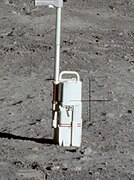






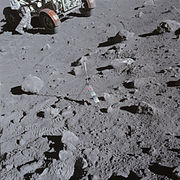
















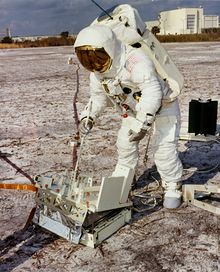





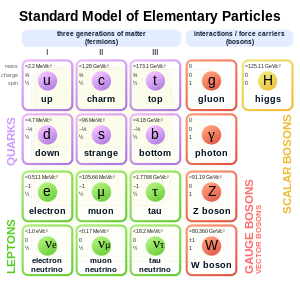
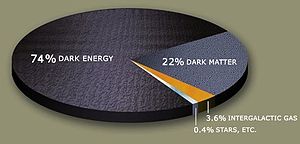










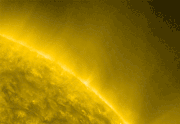











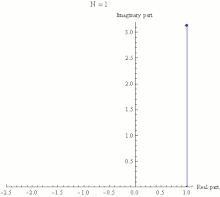
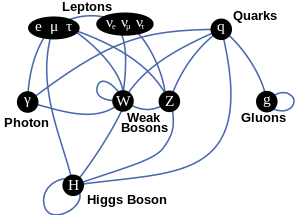



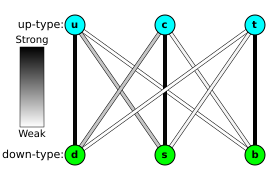
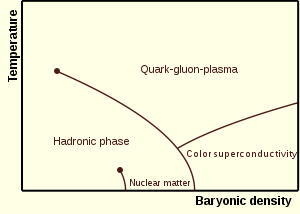

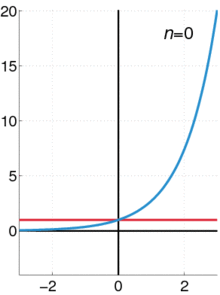











 the velocity gradient perpendicular to the direction of shear, or equivalently the strain rate [s−1] (전단력에 수직한 방향의 속도의 기울기)
the velocity gradient perpendicular to the direction of shear, or equivalently the strain rate [s−1] (전단력에 수직한 방향의 속도의 기울기)





